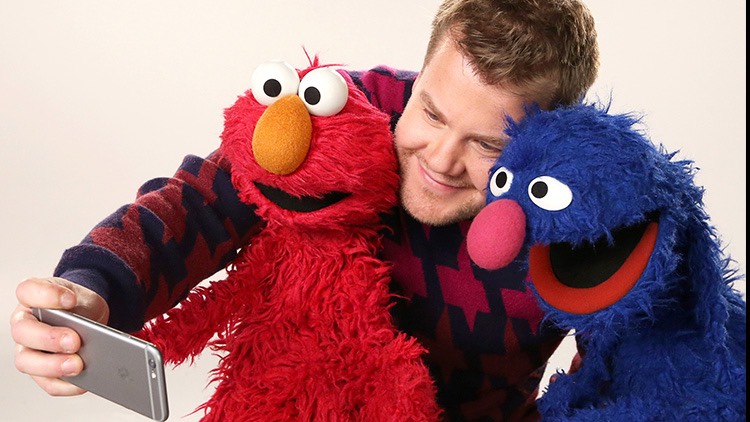Sesame Tries Kindness in New Season

Related: New Home for FX Gumshoe Comedy ‘Archer’
While an HBO premiere typically takes place on a Sunday night, a significant one went down on a Saturday morning. That’s because Sesame Street, which kicked off its second season on HBO Jan. 7, is no typical series. Season 47, which will make its way to longtime partner network PBS in September, features more Elmo’s World segments, and a new theme called the Kindness Curriculum that encourages positive behavior in a world that’s often kind of mean.
There’s a decidedly more techy bent to the new season, whether it’s Elmo’s new cellphone, Smartie, or the “kindness cam” that shows children performing acts of goodwill. The Kindness Curriculum is a nod to when Sesame highlighted topics such as inclusion and race early in its tenure. “It’s extraordinarily powerful and incredibly important these days,” says Brown Johnson, creative director at Sesame Workshop.
A year after the kids programming icon debuted on premium cable, the fit may still seem peculiar for the network that airs dark dramas such as Game of Thrones and Westworld. Lisa Heller, senior VP of original programming at HBO, says the common DNA around the HBO originals portfolio is, simply, strong, standout shows. “HBO brings exceptional and distinctive programming to our audience,” she says. “Sesame Street wonderfully broadens our offerings in that regard.”
Sesame Workshop’s motivation to seek out HBO was borne of financial need. The Sesame camp is sensitive to the perception that it has abandoned free television, which it has not. Airing on HBO means more reach, and Sesame Workshop retains “100% creative control,” according to Steve Youngwood, chief operating officer at Sesame Workshop. (Heller mentions a “genuine openness” from Sesame regarding HBO offering feedback.)
“Life got better for all sides,” says Youngwood. “We increased distribution and added more new episodes.”
Shorter and Sweeter
Broadcasting & Cable Newsletter
The smarter way to stay on top of broadcasting and cable industry. Sign up below
The episode count is 35, up from 26, though the show is now a half-hour as opposed to an hour, with the stock segments that filled out the hour pared down. (Sesame insiders say a half-hour pilot was in the works before the HBO deal, as was a set overhaul.)
Youngwood speaks of “evolving” Sesame Workshop to meet the needs of a TV landscape that looks little like it did when Sesame Street launched.
Michael Davis, who wrote Street Gang: The Complete History of Sesame Street, says the cable deal hasn’t harmed PBS. “If you’re three years old, you don’t know if what you’re watching was filmed in 2013 or 2014 or 2015,” he says. “You just know it’s Sesame Street.”
In a statement, PBS says it is “grateful” to have Sesame on public television, “building on our 46-year history of providing all children programming that helps prepare them for success in school and in life.”
Perfecting What’s in Store
On a gray day in December, the Sesame crew was hard at work at Kaufman Astoria Studios in Queens, New York, also home to Netflix’s Orange Is the New Black and NBC’s Shades of Blue. The new set in Studio J features an updated Mr. Hooper’s Store and brownstone; production designer David Gallo scoured New York’s streets in search of the perfect storefronts and apartment buildings with which to construct the new Sesame Street. A massive mural of a bridge is, in fact, an amalgam of New York City’s various spans.
There’s a flurry of activity below the camera’s frame, with puppeteers on wheeled boards hyper-kinetically hustling to make a song about a dog and a frog look authentic. The frog isn’t Kermit but a generic puppet—an “A.M.” (Anything Muppet) amphibian, in Sesame parlance.
After eight takes in Hooper’s cramped shop, the song, a bouncy reggae tune about a frog searching for his habitat, looks and sounds good. “Everybody happy with that?” bellows stage manager Shawn Havens.
“Perfect!” shoots back a videographer.
The puppeteers and crew take a breather; one performer slips Abby Cadabby onto her hand to surprise a baby who’s visited the set with her parents, resulting in the cutest scene one could ever imagine.
Besides cameos from musical guests Jason Derulo and James Corden, the new season features 25 Elmo’s World segments, each around five minutes. (The last new Elmo’s World segments aired in season 38.) “If Elmo was a stock, I’d still be buying him,” says Davis.
Youngwood says the HBO pact has Sesame on solid footing. Next year, the partners debut animated show Esme and Roy. “The only way you get to 47 years is by evolving,” he says, “and recreating yourself.”
Michael Malone is content director at B+C and Multichannel News. He joined B+C in 2005 and has covered network programming, including entertainment, news and sports on broadcast, cable and streaming; and local broadcast television, including writing the "Local News Close-Up" market profiles. He also hosted the podcasts "Busted Pilot" and "Series Business." His journalism has also appeared in The New York Times, The L.A. Times, The Boston Globe and New York magazine.

